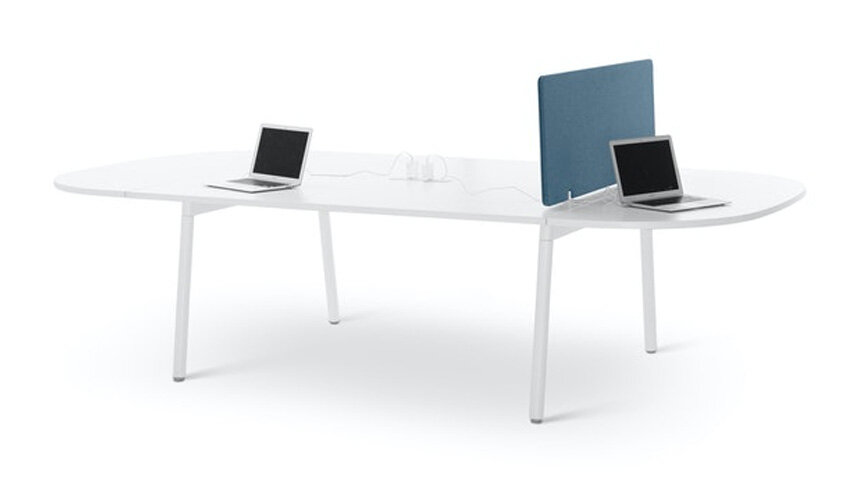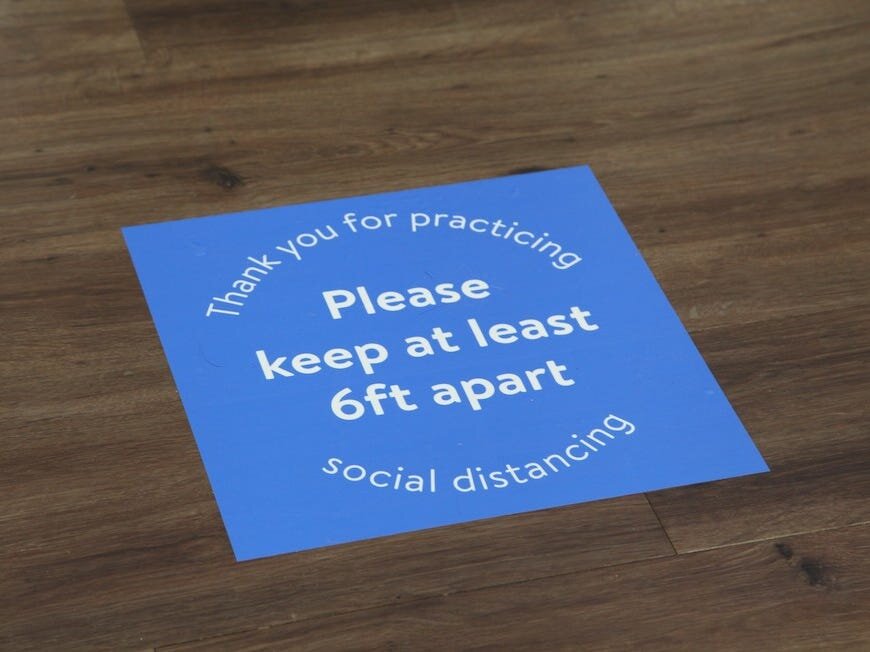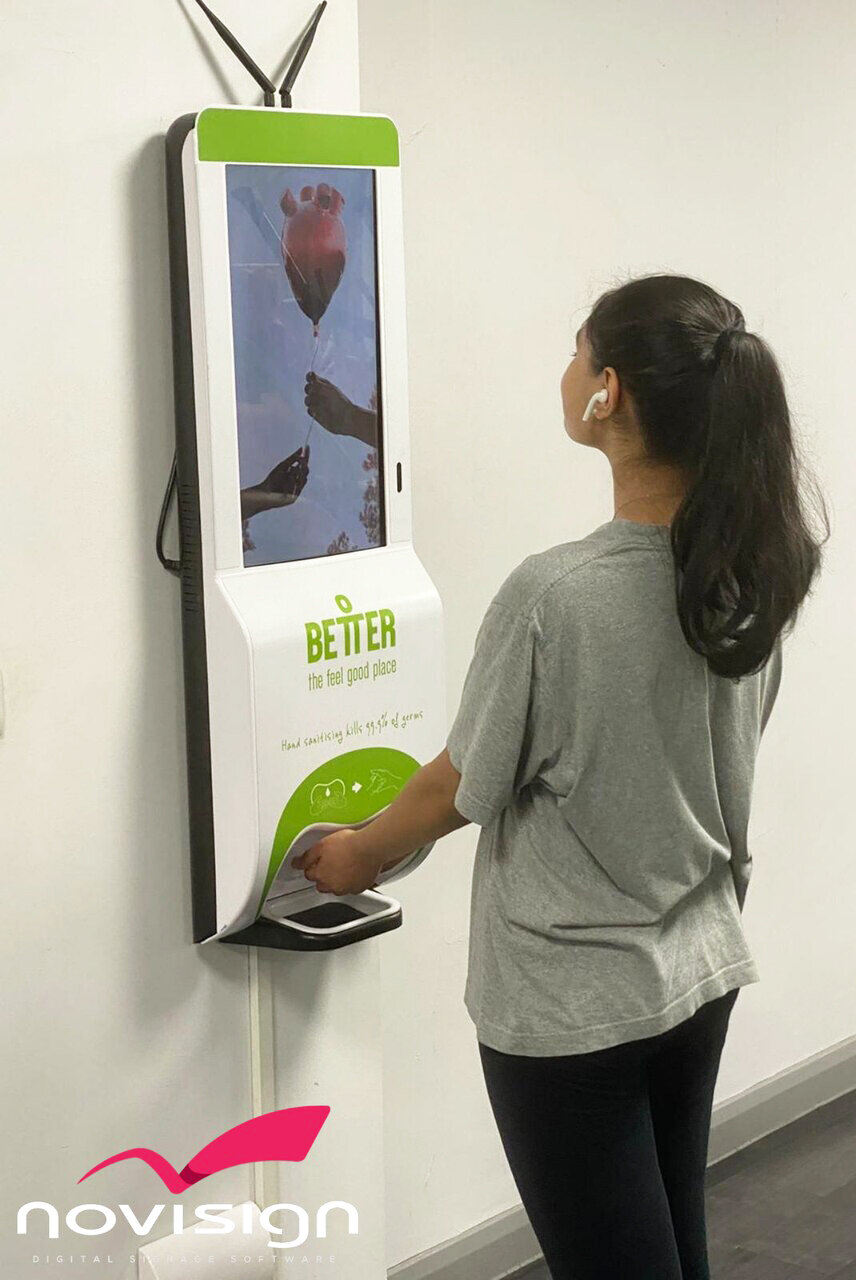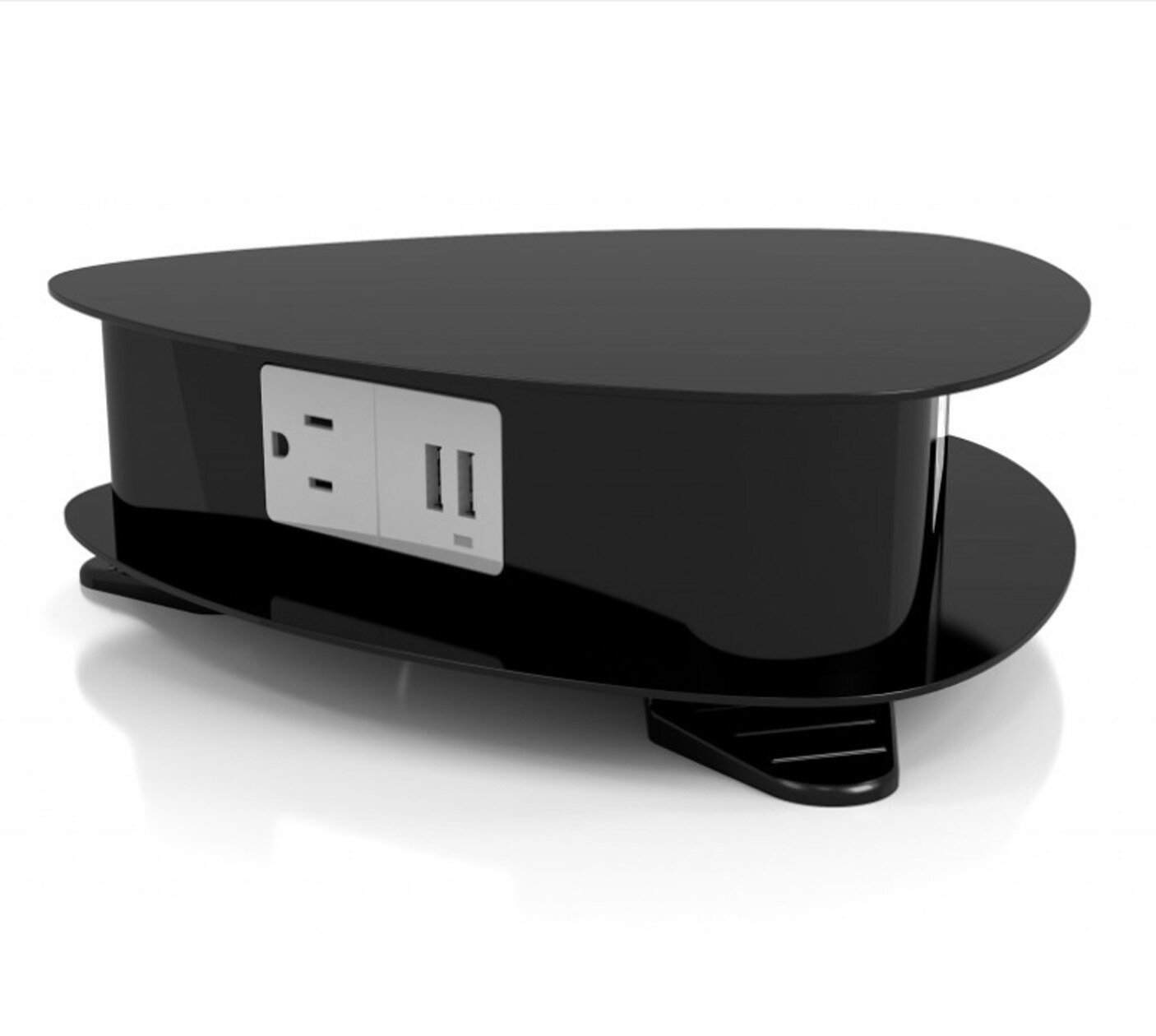Planning for the Covid-19 pandemic will require employers to update their floor plans and company protocols while potentially sourcing outside products to help ensure the safety and health of their returning employees. The purpose of this guide is to allow companies to plan for and embrace the changing work environment as quickly and efficiently as possible.
Plan:
Planning your workspace for returning employees
Use Physical and Spatial Barriers
© BuzziSpace / buzzi.space
Re-orient desking so employees are facing away from each other and maintain a six-feet distance at minimum. Sneeze guard screens or panels on desk surfaces or movable screens can be used to guard against spreading germs.
Give each person their own assigned work area and consider dividing collaboration spaces and shared desking to fit this purpose.
If ordering new furniture, pay attention to the clean-ability of products. Materials such as laminates, painted metals, and other hard surfaces are very cleanable with commercial cleaning products [2]. For soft seating, consider bleach cleanable fabrics and upholstery.
Creating a Flow of Traffic
Find specific traffic patterns that employees can travel around the office to minimize crossing paths and contact with each other.
Consider using arrows on the floor to help orient people and guide them through the correct office pathways.
Have Smaller Meetings
© Unsplash / Toa Heftiba
Remove chairs from conference rooms to maintain the ten-person maximum gathering rule [1].
Set rules for how many people can be in any room or area at any given time. Incorporate video conferencing equipment and guidelines for people to meet in larger groups virtually.
Update Building Systems
Have your HVAC systems inspected and cleaned to ensure they are operating correctly and providing enough fresh air circulation and filtration through your space.
Source:
Products and resources to consider for the changing environment
Products for a Safer Environment
Shields, barriers, and dividers. Depending on your needs, consider flexible, temporary, or permanent. © Poppin Privacy Panel / poppin.com
Floor demarcations and signage to help guide people throughout the workspace and to set clear boundaries of travel. © Walmart / walmart.com
Sanitizing stations and kits. © Hand Sanitizer Kiosk / tierney.com
Bio-degradable, disposable kitchenware to avoid the spread of germs. © Birch Disposable Silverware / ecopartywarehouse.com
Power extenders to help disperse personnel quickly with minimal disruption and expense. © Dekko Drifter / dekko.com
Cleanable furniture and finishes to withstand new intense cleaning protocols and prohibit the growth of microbes. © Luum Textiles / luumtextiles.com
Maximize Safety Minimize Time
Look at ready-to-go or quick ship products that are readily available for speedy shipments.
© Unsplash / Tedward Quinn
To save your time, consider investing in professional cleaning companies to do initial and routine cleanings. You may need to invest in services beyond your typical after-hours cleaning crew.
Consider hassle-free ordering by engaging a third party to handle researching, ordering, tracking, and delivering of products that meet your budget.
Produce:
Establishing workplace guidelines and protocols
Communicate New Protocols
© Unsplash / iMattSmart
Prepare employees before they return to work by requiring safety training using video conferencing. Make sure everyone understands the new health rules and regulations to ensure a successful workplace adaptation.
Give them a written copy of your new protocols for them to review and answer any questions they may have about pay, leave, safety, health, etc. You want your employees to feel safe when coming back to the office.
Utilize Employee Health Screenings
© Unsplash / Michael Amadeus
Establish protocols for employees to test themselves daily before coming to work. Have a response protocol if someone starts to feel ill, including a potential isolation room if someone starts feeling ill while they are in the office. Communicate to employees the strict health guidelines of fourteen days quarantine before returning to work if they have been exposed to Covid-19 or are having any symptoms [2].
Alternative Employee Schedules
© Unsplash / LinkedIn Sales Navigator
Alternate work schedules and shifts so only a certain number of employees will be in your workplace at a particular time. Realize that due to new constrained spatial requirements, all of your employees may not be able to return to work at once. Encourage employees to continue to work from home if they can.
If you typically have large group lunch events, consider providing box lunches for employees rather than a buffet-style lunch. Have employees eat at their assigned seating locations rather than in the cafeteria or in groups.
Be Mindful of Others
© Unsplash / Julian Wan
Only accept a certain amount of visitors at a time. Require visitors to wear personal protective equipment (PPE) in the workplace, including face masks or gloves, and be prepared to provide them when needed [1]. Have your employees follow the same protocols.
Practice Frequent and Visible Cleaning
© Unsplash / Yan Maignan
Encourage and increase cleaning throughout the day to help employees feel confident and safe when they return to work [1]. Establish requirements for washing hands and cleaning equipment after use. Hang up signage to remind employees.
Disinfectant stations should be at every employee vantage point, including disinfectant wipes in conference rooms and general public areas and hand sanitizer in strategic locations [1]. Consider hands-free options for doors, badge readers, and garbage/recycling bins. Maintain a minimum 30-day stock of cleaning supplies when possible [2].
Sources
A Common Sense Guide For Returning To The Post COVID-19 Workplace, by Cynthia Miolta, Work Design Magazine (May 2020).
The Post Covid Workplace, by Steelcase, Whitepaper (May 2020).
Guidance on Preparing Workplaces for COVID-19, by Occupational Safety and Health Act (OSHA), cdc.gov (May 2020).
How we can help
Have you re-imagined your workplace during and post COVID-19 - Onyx Creative can help you:
PLAN
Reconfiguring your space and assisting with space assignments to create a healthier environment for all.
SOURCE
Assist with ordering and purchasing office products that will maximize safety.
PRODUCE
Plan and write your new company protocol documents to ensure everyone is following the best safety guidelines.















































